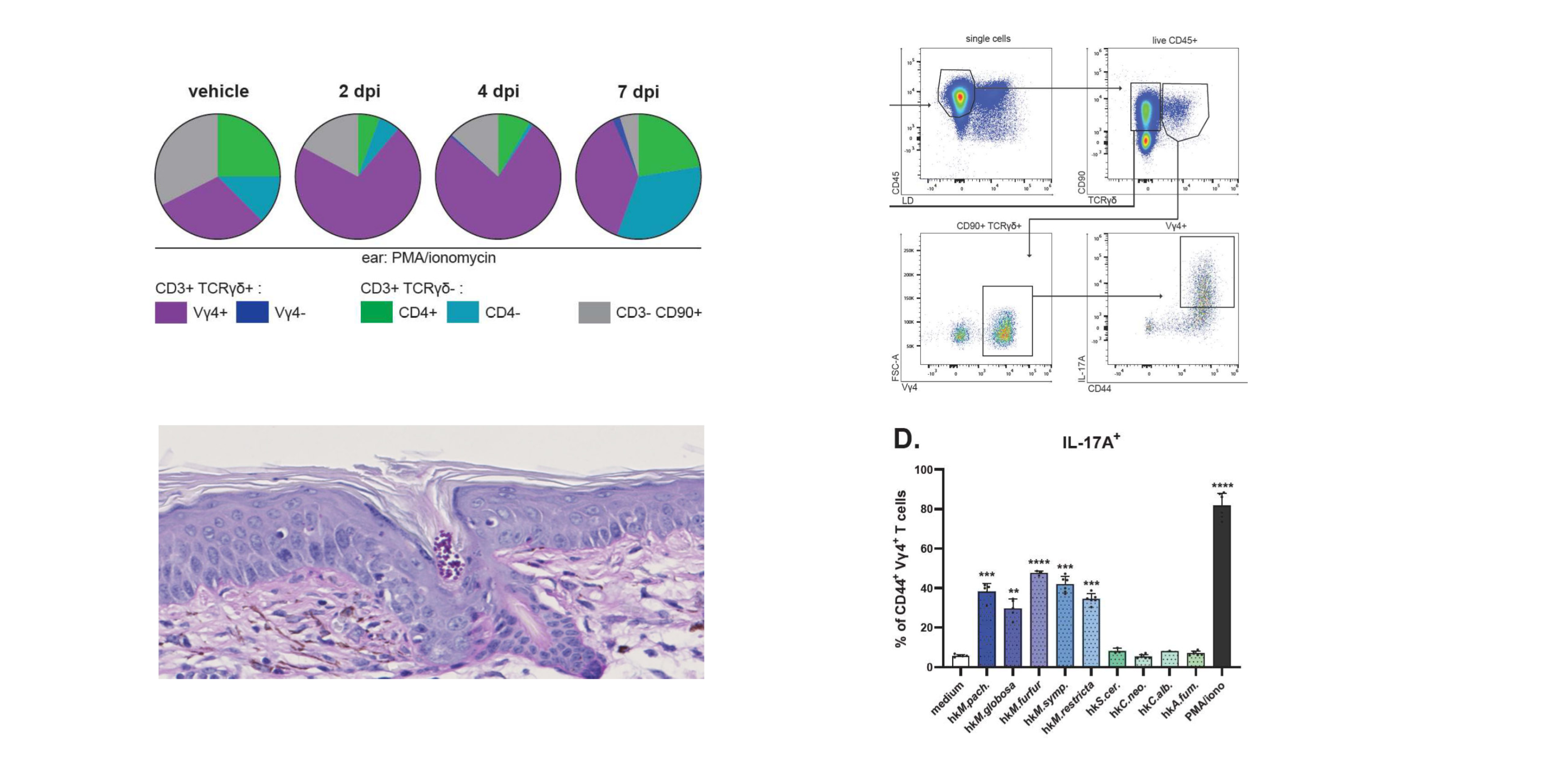Cutaneous immunity against the abundant skin commensal yeast Malassezia and its implications in heath and disease.
Protective antifungal immunity keeping Malassezia skin colonization in check
The skin, one of our body’s largest organs, is home to millions of microbes, which in addition to bacteria also include fungi. The yeast Malassezia is by far the most abundant fungal organism found on human and animal skin. Tight control of the growth of Malassezia is required to prevent exuberant masses of fungus on our skin or invasion of the fungus into tissues, which would result in disease.
γδ T cells and αβ T cells cooperate in providing IL-17 for fungal control. While Th17 cells depend on fungal recognition via C-type lectin receptors, IL-17-producing γδ T cells follow a different route of activation and respond to direct engagement by fungal metabolites, which are unique to Malassezia and not conserved in other fungal genera. This project will clarify how the complementary cellular sources of IL-17 in the skin are differentially regulated by and respond to Malassezia.
